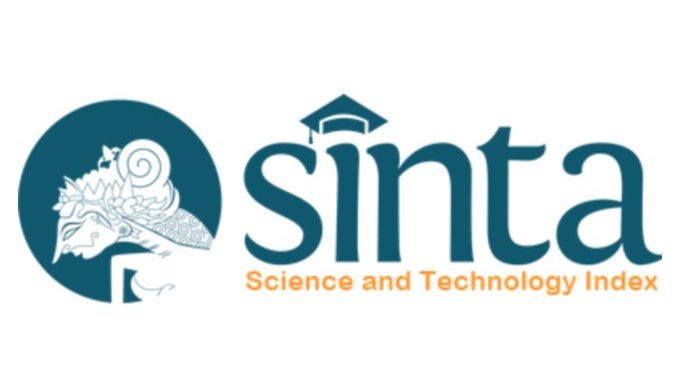Karakteristik Klinis Serta Pengaruh Reseptor ACE2 dan Sel Natural Killer Terhadap Gejala COVID-19 pada Anak
DOI:
https://doi.org/10.55175/cdk.v48i3.56Keywords:
ACE2, anak, COVID-19, linfositAbstract
Coronavirus Disease 2019 (COVID-19) yang disebabkan oleh virus SARS-CoV-2, pertama kali dilaporkan di Wuhan, Cina, pada Desember 2019. Gejala pada anak umumnya cukup ringan. Faktor yang dapat berperan adalah usia di bawah 10 tahun, memiliki respons imun bawaan aktif, dan saluran napas yang lebih sehat, paparan terhadap asap rokok dan polusi lebih rendah dibandingkan pada orang tua, serta imaturitas reseptor angiotensin converting enzyme 2 (ACE2) yang merupakan tempat utama berikatan COVID-19. Faktor lainnya adalah tingginya sel natural killer (NK).
Coronavirus Disease 2019 (COVID-19) caused by the SARS-CoV-2 virus was first reported in Wuhan, China, in December 2019. Symptoms in children are generally mild. Factors that can contribute including innate immune response in children under 10 year-old, healthier airways, lower exposure to cigarette smoke and pollution compared to adult, and immaturity of the angiotensin converting enzyme 2 (ACE2) receptor, the most frequent binding site for COVID-19. Another factor that can contribute is the high level of natural killer (NK) cells.
Downloads
References
World Health Organization. Coronavirus disease 2019 (COVID-19): Situation report—37 [Internet]. [cited 2020 Nov 20]. Available from: https://www.who.int/docs/default-source/coronaviruse/situation-reports/20200226-sitrep-37-covid-19.pdf?sfvrsn=6126c0a4_2.
Matthai J, Shanmuggam N, Sobhan P. Coronavirus disease (COVID-19) and the gastrointestinal system in children. Indian Pediatr. 2020;57(6):533-5. doi: 10.1007/s13312-020-1851-5
Jiehao C, Jin X, Daojiong L, Zhi Y, Lei X, Zhenghai Q, et al. A case series of children with 2019 Novel coronavirus infection: Clinical and epidemiological features. Clin Infect Dis. 2020;71(6):1547-51.
Chua M, Lee J, Sulaiman S, Tan H. From the frontline of COVID-19 – How prepared are we as obstetricians: A commentary. BJOG. 2020;127(7):786-8. doi: 10.1111/1471-0528.16192
Lee PI, Hu YL, Chen PY, Huang YC, Hsueh PR. Are children less susceptible to COVID-19? J Microbiol Immunol Infect. 2020;53(3):371-2. doi: 10.1016/j.jmii.2020.02.011
Lu Q, Shi Y. Coronavirus disease (COVID-19) and neonate: What neonatologist need to know. J Med Virol. 2020;92(6):564-7. doi : 10.1002/jmv.25740
Zhang Y, Lin D, Xiao MF, Wang JC, Wei Y, Lei ZX, et al. 2019-novel-coronavirus infection in a three-month-old baby. Zhonghua Er Ka Za Zhi. 2020;58:E006. doi: 10.3760/cma.j.issn.0578-1310.2020.0006
Cui X, Zhang T, Zheng J, et al. Children with coronavirus disease 2019: A review of demographic, clinical, laboratory, and imaging features in pediatric patients. J Med Virol. 2020. 10.1002/jmv.26023. doi: 10.1002/jmv.26023.
Wu Z, McGoogan JM. Characteristics of and important lessons from the coronavirus disease 2019 (COVID-19) outbreak in China: Summary of a report of 72314 cases from the Chinese Center for Disease Control and Prevention. JAMA. 2020;323(13):1239-42. doi: 10.1001.jama.2020.2648
Tan X, Huang J, Zhao F, Zhou Y, Li JQ, Wang XY. Clinical features of children with SARS-CoV-2 infection: An analysis of 13 cases from Changsa, China. Zhongguo Dang Dai Er Ke Za Zhi. 2020;22:294-8. doi: 10.7499/j.issn.1008-8830.2003199
Shahabi F, Mosaddeghi P, Negahdaripour M, Dehghani Z, Farahmandnejad M, Moghadami M, et al. Therapeutic approach for COVID-19 based on the dynamics of interferon-mediated immune responses. Preprints [Internet]. 2020. Available from: https://www.preprints.org/manuscript/202003.0206/v1
Brodin P. Why is COVID-19 so mild in children? Acta Paediatr. 2020;109(6):1082-3. doi:10.1111/apa.15271
Cristiani L, Mancino E, Matera L, et al. Will children reveal their secret? The coronavirus dilemma. Eur Respir J. 2020;55(4):2000749. doi: 10.1183/13993003.00749-2020
Ciaglia E, Vecchione C, Puca AA. COVID-19 infection and circulating ACE2 levels: Protective role in women and children. Front Pediatr. 2020;8. doi: 10.3389/fped.2020.00206.
Ni W, Yang X, Yang D, Bao J, Li R, Xiao Y, et al. Role of angiotensin-converting enzyme 2 (ACE2) in COVID-19. Crit Care. 2020;24:422. doi: 10.1186/s13054-020-03120-0
Zhou P, Yang X, Wang X, Hu B, Zhang L, et al. A pneumonia outbreak associated with a new coronavirus of probably bat origin. Nature. 2020;579:270-3. doi. 10.1038/s41586-020-2012-7
Wrapp D, Wang N, Corbett K, Goldsmith J, Hsieh C, Abiona O, et al. Cryo-EM structure of the 2019-nCoV spike in the prefusion conformation. Science. 2020;367:1260-3. doi: 10.1126/science.abb2507
Kuba K, Imai Y, Ohto-Nakanishi T, Penninger J. Trilogy of ACE2: A peptidase in the renin angiotensin system, a SARS receptor, and a partner for amino acid transporters. Pharmacol Ther. 2010;128;119-28. doi: 10.1016/j.pharmthera.2010.06.003
Hamming I, Timens W, Bulthuis M, Lely A, Navis G, Van Goor H. Tissue distribution of ACE2 protein, the functional receptor for SARS coronavirus. A first step in understanding SARS pathogenesis. J Pathol. 2004;203:631-7. doi: 10.1002/path.1570
Zhang H, Kang Z, Gong H, Xu D, Wang J, Li Z, et al. SARS-CoV-2 productively infects human gut enterocytes. Science. 2020;369(6499):50-4. doi: 10.1126/science. abc.1669
Ferrario CM, Jessup J, Chappel MC, Averill DB, Brosnihan KB, Tallant EA, et al. Effect of angiotensin-converting-enzyme inhibition and angiotensin II receptor blockers on cardiac angiotensin-converting enzyme 2. Circulation. 2005;111:2605-10 doi: 10.1161/CIRCULATIONAHA.104.510461
Gurwitz D. Angiotensin receptor blockers as tentative SARS-CoV-2 therapeutics. Drug Dev Res. 2020;81:537-40. doi: 10.1002/ddr.21656
Fang L, Karakiulakis G, Roth M. Are patients with hypertension and diabetes mellitus at increased risk for COVID-19 infection? Lancet Respir Med. 2020;8(4). doi:10.1016/S2213-2600(20)30116-8
Liu WJ, Zhao M, Liu K, Xu K, Wong G, Tan W, et al. T-cell immunity of SARS-CoV: Implications for vaccine development against MERS-CoV. Antiviral Res. 2017;137:82-92. doi: 10.1016/j.antiviral.2016.11.006
Chen N, Zhou M, Dong X, Qu J, Gong F, Han Y, et al. Epidemiological and clinical characteristics of 99 cases of 2019 Novel coronavirus pneumonia in Wuhan, China: A descriptive study. Lancet 2020;395(10223):507-13. doi: 10.1016/S0140-6736(20)30211-7
Feng K, Yun YX, Wang XF, Yang GD, Zheng YJ, Lin CM, et al. Analysis of CT features of 15 children with 2019 Novel coronavirus infection. Zhonghua Er Ke Za Zhi. 2020;58:E007 doi: 10.3760/cma.j.issn.0578-1310.2020.0007.
Wei M, Yuan J, Liu Y, Fu T, Yu X, Zhang ZJ. Novel coronavirus infection in hospitalized infants under 1 year of age in China. JAMA 2020;323(13):1313-4. doi: 10.1001/jama.2020.2131
Yang P, Liu P, Li D, Zhao D. Corona virus disease 2019, a growing threat to children? J Infection. 2020;80(6):671-93. doi 10.1016/j.jinf.2020.02.024
Onder G, Rezza G, Brusaferro S. Case fatality rate and characteristics of patients dying in relation to COVID-19 in Italy. JAMA. 2020;323(18):1775-6. doi: 10.1001/jama.2020.4683
Hong H, Wang Y, Chung HT, Chen CJ. Clinical characteristics of Novel coronavirus disease 2019 (COVID-19) in newborn, infants and children. Pediatr Neonatol.2020;61(2):2. doi: 10.1016/j.pedneo.2020.03.001
Henry BM, Lippi G, Plebani M. Laboratory abnormalities in children with Novel coronavirus disease 2019. Clin Chem Lab Med. 2020;58(7):1135-8. doi: 10.1515/cclm-2020-0272
Tan YP, Tan BY, Pan J, Wu J, Zeng SZ, Wei HY. Epidemiologic and clinical characteristics of 10 children with coronavirus disease 2019 in Changsa, China. J Clin Virol. 2020;127:104353. doi: 10.1016/j.jcv.2020.104353
Duan YN, Zhu YQ, Tang LL, Qin J. CT features of Novel coronavirus pneumonia (COVID-19) in children. Eur Radiol. 2020;30(8):4427-33. doi: 10.1007/s00330-020-06860-3.
Zhu L, Wang J, Huang R, Liu L, Zhao H, Wu C, et al. Clinical characteristics of a case series of children with coronavirus disease 2019. Pediatr Pulmonol. 2020;55(6):1430-32. doi: 10.1002/ppul.24767
Feldstein LR, Rose EB, Horwitz SM, Collins JP, Newhams MM, Son MBF, et al. Multisystem inflammatory syndrome in U.S children and adolescents. N Engl J Med.2002;383(4):334-6. doi: 10.1056/NEJMoa2021680
Karimi A, Rafiei Tabatabaei S, Rajabnejad M, Pourmoghaddas Z, Rahimi H, Armin S, et al. An algorithmic approach to diagnosis and treatment of coronavirus disease 2019 (COVID-19) in children: Iranian expert’s consensus statement. Arch Pediatr Infect Dis. 2020;8:e102400. doi: 10.5812/pedinfect.102400
Zheng F, Liao C, Fan QH, Chen HB, Zhao XG, Xie ZG, et al. Clinical characteristics of children with coronavirus disease 2019 in Hubei, China. Curr Med Sci. 2020;40(2):275-80. doi: 10.1007/s11596-020-2172-6
Su L, Ma X, Yu H, Zhang Z, Bian P, Han Y, et al. The different clinical characteristics of coronavirus disease cases between children and their families in China – The character of children with COVID-19. Emerg Microbes Infect. 2020;9(1):703-13. doi: 10.1080/22221751.2020.1744483
Chen ZM, Fu JF, Shu Q, Chen YH, Hua CZ, Li FB, et al. Diagnosis and treatment recommendations for pediatric respiratory infection caused by the 2019 Novel coronavirus. World J Pediatr. 2020;16(3):240-6. doi: 10.1007/s12519-020-00345-5
Mantovani A, Rinaldi E, Zusi C, Beatrice G, Saccomani MD, Dalbeni A. Coronavirus disease 2019 (COVID-19) in children and/or adolescents: A meta-analysis. Pediatr Res. 2020. doi: 10.1038/s41390-020-1015-2
Ludvigsson JF. Systematic review of COVID-19 in children shows milder cases and a better prognosis than adults. Acta Paediatr. 2020;109:1088-95. doi: 10.1111/apa.15270
Centers For Disease Control and Prevention For parents: Multisystem inflammatory syndrome in children (MIS-C) associated with COVID-19 [Internet]. [cited 2020 Nov 20] Available from : https://www.cdc.gov/coronavirus/2019-ncov/daily-life-coping/children/mis-c.html
Lu X, Zhang L, Du H, Zhang J, Li YY, Qu J, et al. SARS-CoV-2 infection in children. N Engl J Med. 2020;55(2);95-102. doi: 10.14744/TurkPediatriArs.2020.20270 45. Cao Q, Chen YC, Chen CL, Chiu CH. SARS-CoV-2 infection in children: Transmission dynamics and clinical characteristics. J Formos Med Assoc. 2020;119:670-3. doi:10.1016/j.jfma.2020.02.009
Downloads
Published
How to Cite
Issue
Section
License
Copyright (c) 2021 Cermin Dunia Kedokteran

This work is licensed under a Creative Commons Attribution-NonCommercial 4.0 International License.





















